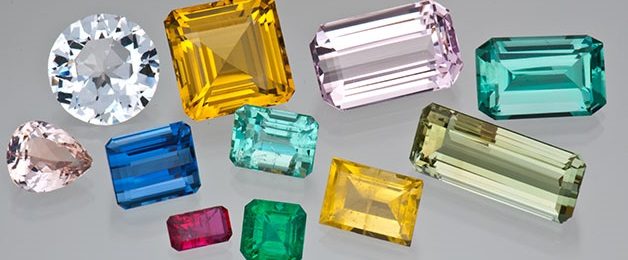Gemstones have some interesting optical effects called ‘phenomena’ by gemologists. There is one special effect that stands out to me, it exerts a charm that eludes no-one, it is asterism or the star effect. Is there nothing more wonderful than seeing light dancing on the surface of a gemstone?

Estrella Quartz Pendant
Special requirements
The term “asterism” comes from the Greek word “aster”, which means “star.” Even in astronomy, the concept of asterism is used for the constellations. In regards to gemstones, like the constellations, the star effect occurs only under certain conditions and not for all minerals. The star effect is generated by the reflection of light from multidirectional, long needle-shaped inclusions, these occur in parallel arrangements in at least two different directions to make it visible. If the inclusions are only shown in a single direction, this effect can look similar to the fracture of a pupil, and reminds us of the eye of a cat which is why it is named the cats eye effect, or in technical jargon “chatoyancy”.
The closer these inclusions are to each other the more beautiful, clearer and sharp the star appears. This phenomenon can occur in six, four and on the odd occasion 12 rays. The gem needs to be cut as a cabochon, a convex form with a perfect surface and not faceted. The surface must also be well polished as the presence of inclusions on the surface can prevent the visibility of the effect. A prerequisite for well-proportioned and beautiful stars is that its needles are uniform, otherwise the stars appear distorted.

Black-Star-Sapphire
The star in the centre
Getting the perfect star can be a challenge for gem cutters, they must cut the gem so that the star is exactly centred. Despite this, the centre of the star does not necessarily need to be at the centre of the gemstone. Depending on the style and design of the piece of jewellery, a star located on the side can be an even more charming. The placement is of the star is decided primarily while the gemstone is in the ‘rough’ and then it depends on the individual taste of the cutter or the client. To place the star exactly in the centre, the cutter must examine the gemstone closely and orient the cut in order to get the effect. The main difficulty is in identifying the place on a rough gem that will show the best asterism once it has been cut.

Blue Star Sapphire gold ring
Famous gemstones with star effect
The Roman writer and naturalist Pliny the Elder (23-79 AD), speaks about gems featuring the star effect in his work “Natural History”. Some famous gems featuring the star effect can be found in museums and private collections all over the world. Examples of famous star effect gems are the Star Ruby De-Long, a Ruby of over 100 carats discovered in Burma, the Eminent Star Ruby that has a carat weight of 6456 carats, and the “Star of India” with 563.35 carats. You can read more on the famous Star of India and its troubled history in this blog, the story fascinated me so much that I just had to research more!

Diamond Rings- Rocks & Co.





